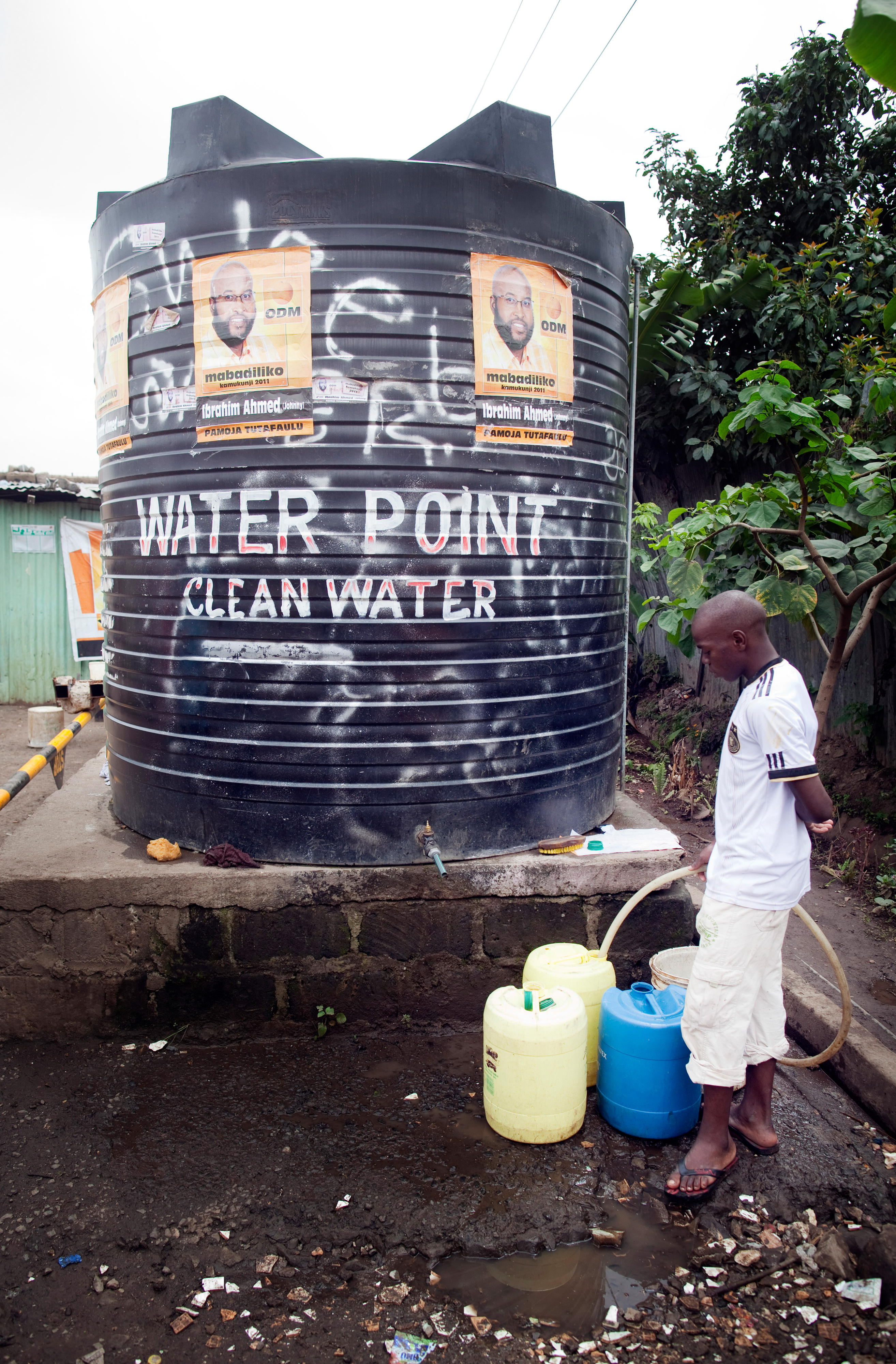Fresh water tank in a poor neighbourhood in Nairobi, Kenya
Copyright© Thomas Köhler/ photothek.net
Drinking water supply Universal access to safe drinking water – a human right
According to the definition used by the World Health Organization (WHO), safely managed drinking water services mean that people can access hygienically safe drinking water from an improved source that is accessible on premises, available when needed and free from faecal and chemical contamination. Improved water sources include piped water, boreholes, protected springs, rainwater, and packaged water. If the nearest safely managed source of water can be reached in 30 minutes or less (round trip), WHO classifies the drinking water service as “basic”.
Over two billion people have no reliable access to drinking water
The adoption of the 2030 Agenda firmly established the goal of ensuring universal access to safe drinking water by 2030 (SDG 6) on the political agenda. However, a UN report on progress on drinking water, sanitation and hygiene (External link) published in 2023 shows that the world is far off track on reaching SDG 6.
While the supply situation has improved significantly over the last 20 years, it is estimated that in 2022 there were still over two billion people who lacked safely managed drinking water. Over 700 million people did not even have basic services, more than half of them in sub-Saharan Africa. This region is also home to the largest proportion of people getting their water directly from surface waters like rivers, streams and lakes.
UN studies have shown that achieving universal access to safely managed drinking water will require a sixfold increase in current rates of progress. This increase would need to be 20-fold in the least developed countries (LDCs).
Possible solutions for providing access to drinking water
German development cooperation projects support our partner countries in their efforts to improve supply systems. The aim is to give all people household access to piped water.
Where this form of supply cannot be made available quickly, temporary solutions are found. Even collective access points can mean huge progress if they provide hygienically safe water – whether via protected springs and wells or in the form of treated water. Water kiosks often come into play as public water points providing water at affordable prices.
As at: 13/06/2024
